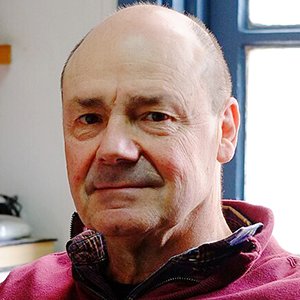Francisco Aboitiz is director of the Interdisciplinary Center for Neuroscience and professor of psychiatry at the Pontificia Universidad Católica de Chile. His research lines include the evolution of the brain and cognition and the neurocognitive underpinnings of neuropsychiatric conditions such as attention-deficit/hyperactivity disorder, autism, multiple sclerosis and epilepsy. He is currently working on social projects, including implementing robotics workshops for children in schools of social risk and assessing their cognitive improvements, and screening resilience signatures in adolescent mothers. He has authored more than 140 scientific articles and is author of the books “A Brain for Speech. A View From Evolutionary Neuroanatomy” and “A History of Bodies, Brains and Minds. The Evolution of Life and Consciousness.”

Francisco Aboitiz
Director
Interdisciplinary Center for Neuroscience
From this contributor
Selected articles
- “A multimodal interface for speech perception: the role of the left superior temporal sulcus in social cognition and autism” | Cerebral Cortex
- “Neural responses to sensory novelty with and without conscious access” | Neuroimage
- “The Enigmatic Reissner's Fiber and the Origin of Chordates ” | Frontiers in Neuroanatomy
- “Neurocognitive mechanisms underlying working memory encoding and retrieval in Attention-Deficit/Hyperactivity Disorder” | Scientific Reports
- “Origin and evolution of human speech: Emergence from a trimodal auditory, visual and vocal network” | Progress in Brain Research
- “Morphological evolution of the vertebrate forebrain: From mechanical to cellular processes” | Evolution & Development
Explore more from The Transmitter
The Transmitter’s most-read neuroscience book excerpts of 2025
Books by Nachum Ulanovsky, Nicole Rust, and Andrew Iwaniuk and Georg Striedter made the list of some of the year's most engaging neuroscience titles.

The Transmitter’s most-read neuroscience book excerpts of 2025
Books by Nachum Ulanovsky, Nicole Rust, and Andrew Iwaniuk and Georg Striedter made the list of some of the year's most engaging neuroscience titles.
Neuroscience’s leaders, legacies and rising stars of 2025
Here are seven stories from the past year about some of the field’s most engaging figures.

Neuroscience’s leaders, legacies and rising stars of 2025
Here are seven stories from the past year about some of the field’s most engaging figures.
The Transmitter’s top news articles of 2025
Check out some of our most-read stories, covering neuroscience funding and policy changes in the United States, and methodological issues in high-profile neuroscience papers.

The Transmitter’s top news articles of 2025
Check out some of our most-read stories, covering neuroscience funding and policy changes in the United States, and methodological issues in high-profile neuroscience papers.
